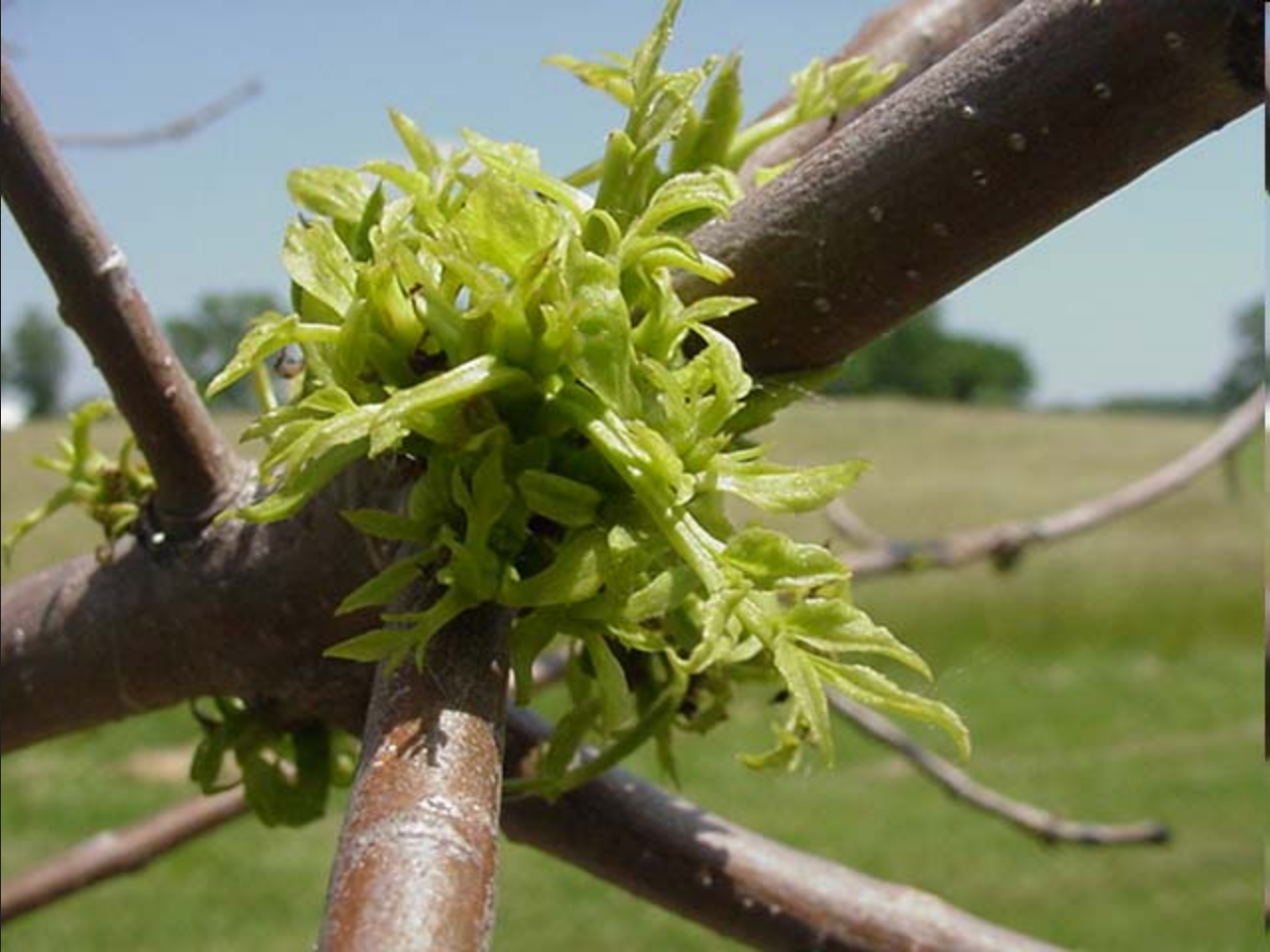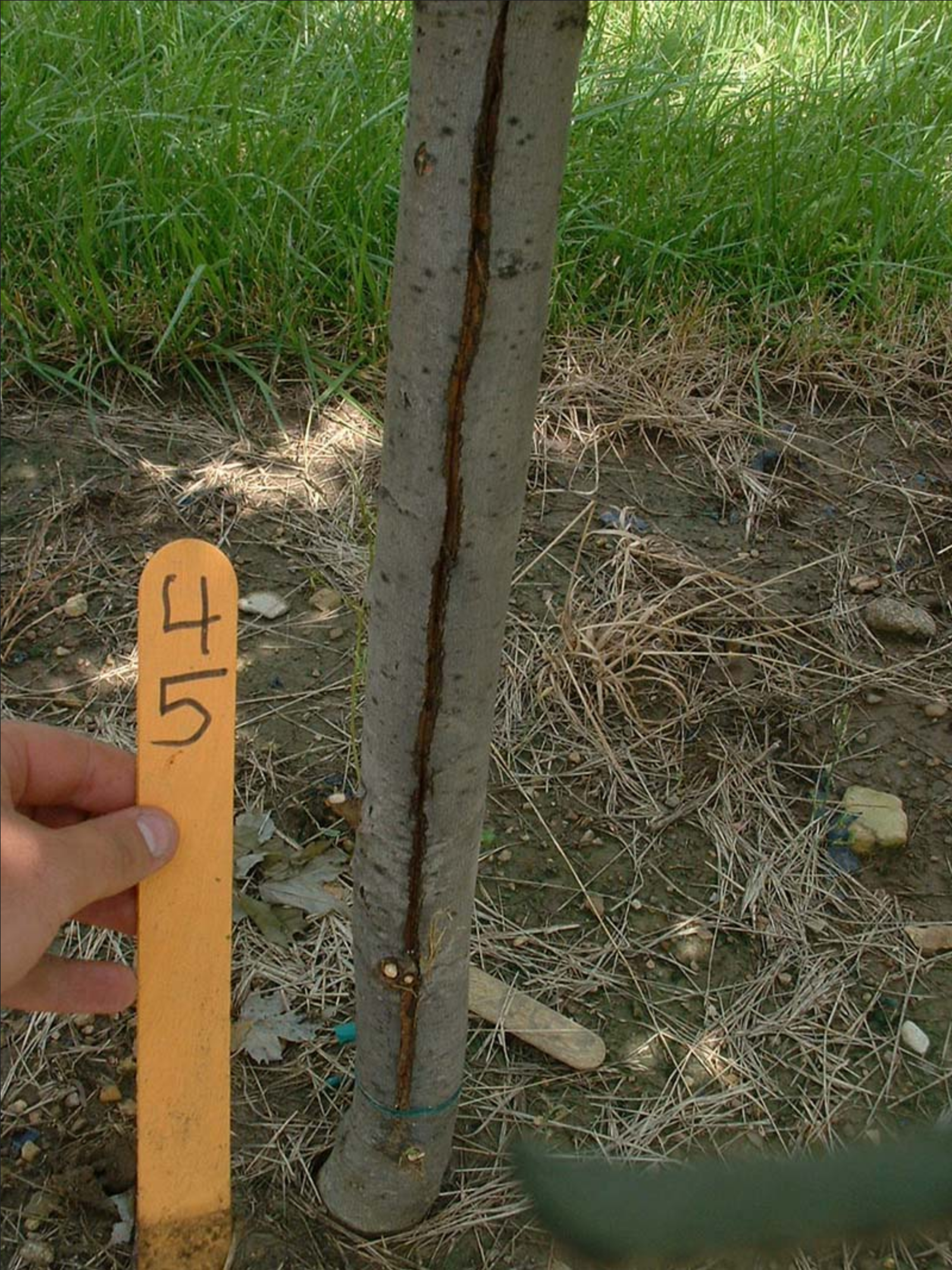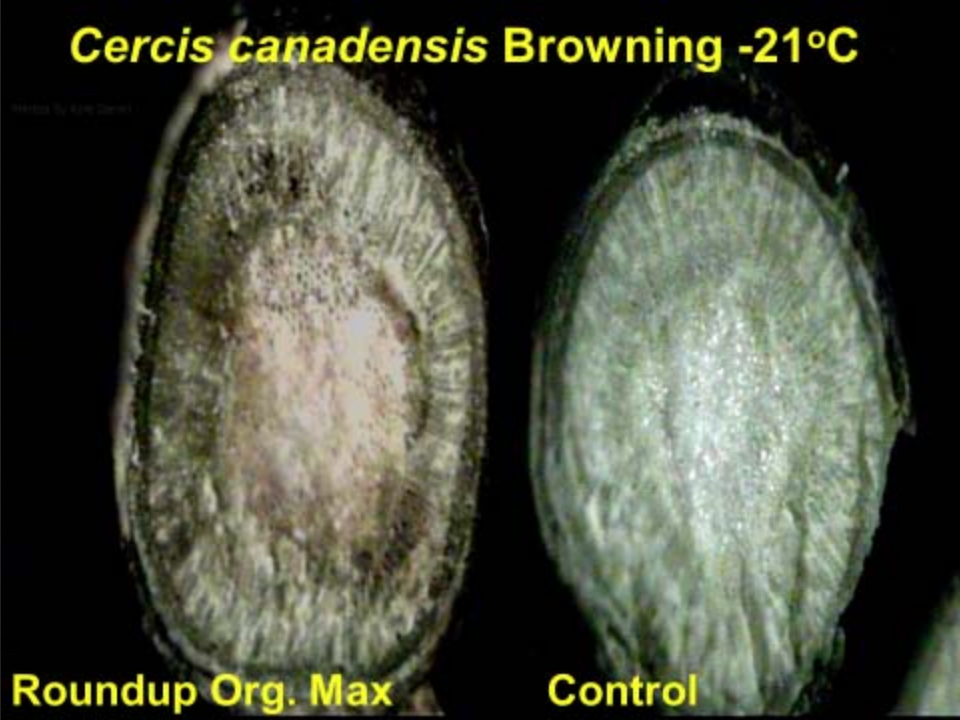Picture of the Week
February 14, 2022
Sub-lethal Glyphosate Injury in Ornamentals
Kyle Daniel, Nursery and Landscape Outreach Specialist, Department of Horticulture and Landscape Architecture
Glyphosate is one of the most commonly used herbicides in the nursery and landscape. The combination of the various attributes, such as limited soil activity, broad spectrum of weeds controlled, systemic activity, ease of use, very low volatility, and others make glyphosate a common tool for nursery and landscape weed control. Though the glyphosate herbicide has been on the market for many years, it wasn’t until glyphosate went off patent that the various carriers and new surfactants were incorporated in the newer glyphosate products. Because of these newer, more effective products, glyphosate is not safe to spray on the bark of trees, whether deliberately or via drift.
Click image to enlarge
Some signs and symptoms of glyphosate damage in ornamental plants include:
- Bark cracking
- Witches broom
- Chlorosis
- Necrosis
- Dieback
- Stunting
- Loss of apical dominance
- Epinasty
- Clubbed roots
- Death
To prevent glyphosate damage in ornamentals plantings use a preemergence herbicide in the spring and fall, use a shield when applying glyphosate around ornamental plants, never use glyphosate as a sucker removal product, and reduce the amount of glyphosate used around ornamentals.
Click on image below for an article in the Purdue Landscape Report about Herbicide Drift





